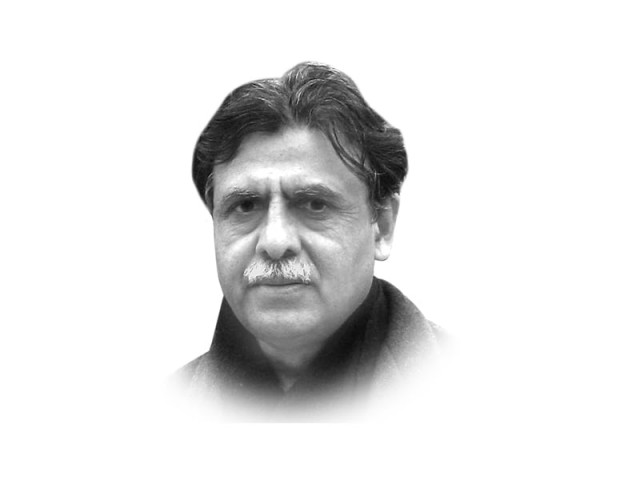Supply chain of militancy
Except for the Swat operation, there has been no comprehensive underpinning of militants in the strife-torn areas.

The writer is a public policy analyst and a former interior secretary
Khyber-Pakhtunkhwa has been battered relentlessly ever since the PTI came to power. The party’s leadership never tires of calling this 'Amreeka ki jang'. Who are we kidding here? I vividly recall the exceptional siege of Khar — the headquarters of the Bajaur Agency — by Sufi Muhammad and his armed lashkar from atop the surrounding hills way back in the mid-1990s, before 9/11, before the war on terror and before the American footprints on Afghanistan. This was just one strand of the brewing militancy in the country, which later on engulfed Swat, Buner and Lower Dir. During this period, we also witnessed mayhem in the Mominpura graveyard in Lahore, in which many innocent lives were lost. That was perhaps, the first-ever gruesome incident targeting funerals in the country. This period also saw the assassination of a leading cleric Maulana Ziaur Rehman Farooqi outside the district court in Lahore. Sectarian militants were acquiring training on the outskirts of Kabul and were guests of Mullah Omar's government. There was already a huge swathe of foreign warriors in Afghanistan — Uzbeks, Chechens, Arabs.
Given these facts, we need to desist from distorting history and calling this ‘America’s war’ and forge ahead with clarity. This brings us close to the grave problem of the never-ending supply chain of militancy in the country. Militancy in Pakistan is very distinct from militant movements in other parts of the world. Unlike movements of political and cultural rights, militancy in Pakistan is not area-specific despite tribal areas having assumed the role of being its hub. Its palpable identification with prevalent religious norms and beliefs instantly facilitates its ingress into massive swathes of the country’s population. However, it does lack the capacity to engage with regular combat troops and civil armed forces on a long-term basis. This handicap is overcome through the agility provided by staging sudden strikes, with an eagle eye kept on security gaps, and then vanishing from the scene or merging with the local population with ease.
Militant outfits are well-knit and highly autonomous with varying driving forces. They do not have an overarching command structure. Availability of an ideologically aligned human resource from across the country keeps the furnace boiling. The next stage is the transportation of this human resource to the tribal areas for training. Drug money coming in from Afghanistan, to a great degree, facilitates militant operations. According to estimates of the UN Office on Drugs and Crime, accruals from opium harvesting have lately been crossing the $3 billion mark. This has been a credible source of oiling the war machine with its spillover occurring across Pakistan. Within Pakistan, donations, charities, extortion and ransom money are also providing a mixed amalgam of funding for militancy. These flows are also directed towards the subsistence of families of suicide bombers.
The presence of unregulated markets dealing in the sale of acids, chemicals and raw material for explosives is an area which has received scant attention by the various provincial governments. For instance, chemicals for explosive-laden vehicles in the attack on the Marriott Hotel, Islamabad a few years ago and in the attack on Hazaras in Quetta this year were procured from Akbari Mandi, Lahore but there has been no check on the sale of such items in this market. Ammonium nitrate, as a key ingredient of explosives, is traded in abundance without an effective monitoring system about how it is actually used. Assorted components, like ball bearings, are some of the basic lethal matter used in prosthetic vests worn by suicide bombers and are readily available. In civilised countries, it is next to impossible to get even a sleeping pill at a drug store over the counter. When will we wake up to the fact that it is necessary to bring these deadly cogs under a regulatory and enforceable framework?
Except for the Swat operation, there has been no comprehensive underpinning of militants in the strife-torn areas despite the physical presence of the army, whose personnel have laid down their lives in episodic encounters. Our political and security establishment continues to rely on an inbuilt ambiguity when it comes to setting a course on how to deal with militancy without realising that our adversary has taken advantage of this lack of clarity. Prime Minister Nawaz Sharif's government is running out of time. It has to move in one clear direction without any further dithering. Showing clips of APCs, which churn out nothing but bland platitudes at a time when our house is on fire, looks out of sync in the current climate.
Published in The Express Tribune, October 15th, 2013.
Like Opinion & Editorial on Facebook, follow @ETOpEd on Twitter to receive all updates on all our daily pieces.
















COMMENTS
Comments are moderated and generally will be posted if they are on-topic and not abusive.
For more information, please see our Comments FAQ